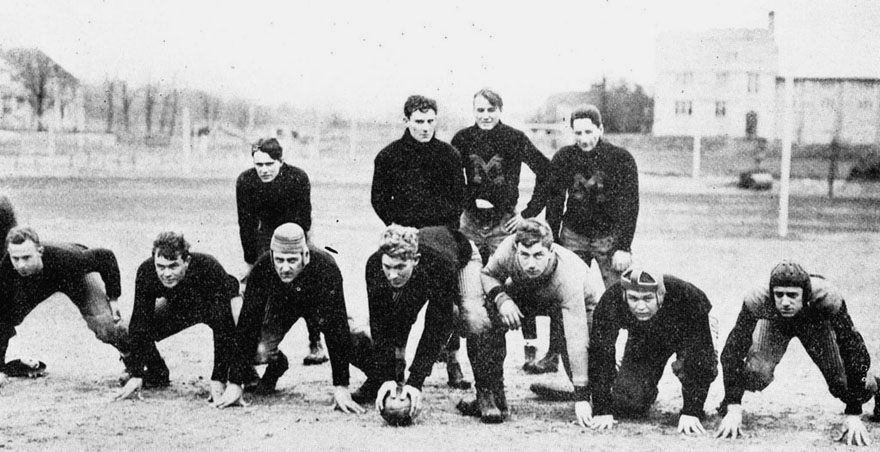The rule changes spearheaded by President Teddy Roosevelt in 1905 to make football a safer game didn’t have the desired impact immediately, and in the long run seem to have done more harm than good. In fact, it’s essentially the gridiron version of the “Drunken Stagger.”
The game’s first existential crisis, with players regularly dying and incurring serious injuries, led to calls for its abolition. Roosevelt, a fan of the rough pastime among other macho endeavors that ran counter to his genteel upbringing, stepped in to reform the sport, imploring influential college officials to reduce brutality and institute the forward pass. No short-range benefit was observed, however, as deaths actually spiked by the end of the decade.
A combination of continued tweaking of rules and improved equipment did eventually make football largely free of fatality, ending the cries for its ban. That, of course, allowed for its continuance and enabled the quiet devastation of brain injuries, something only recently began receiving the necessary attention.
An article in the November 21, 1909 New York Times addressed the carnage. An excerpt:
CHICAGO — Twenty-six killed, seventy seriously injured, and scores of others painfully hurt has been the cost of football to the United States thus far this year, according to figures collected by the Chicago Tribune. The list of the dead seems to be a decisive answer, the Chicago paper says, to the assertion of the football experts that the development of the open game would lead to the lessening of the perils of the gridiron.
The number of deaths is the highest it has been in years, and is almost double that of either of the two seasons recently passed. In 1907 there were only fourteen deaths, and in 1908 only thirteen.
It should be noted that The Tribune’s total includes a number of players hurt in games played during the past year or even earlier, who have died during the current twelvemonth.
The facts also seem to disprove the claim of the game’s supporters that it is the games of untrained boys and the athletic clubs that cause the fatalities. Of this year’s dead the majority were college players, supposed to have been hardened and made fit for the contests on the gridiron by expert coaches and long preparation.
As a result of the numerous fatalities and the agitation which they have stirred up, several colleges have disbanded their teams, and many of the city High Schools in various parts of the country have been forced to give up the sport.
…
Virginia May Forbid the Game
The State of Virginia will probably be the one which will give the heaviest blow to football. Following the death of one of the State University players and the injury of several of her youths within the State, a bill will be introduced into the Legislature at the next session to forbid such contests in the future. It is expected that this bill will be passed. Already the City Council of Norfolk and Portsmouth have forbidden all the contests within the city limits.
The death which attracted the most attention throughout the country, and which revived to a large extent the movement for the suppression of football, was that of Cadet Byrne, a West Point cadet. Byrne was an upper classman, 22 years old, when he was fatally injured during the contest with Harvard University. His neck was broken during a mass play, and despite the fact that every attempt was made to save his life, he died soon after.•



